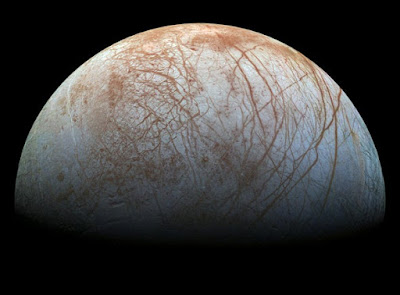Topics: Applied Physics, Astrobiology, Astrophysics, Civilization, Climate Change, Existentialism, Exoplanets, SETI, Thermodynamics
Well, this firmly puts a kink in the "Fermi Paradox."
The Industrial Revolution started in Britain around 1760 - 1840, and there was a colloquial saying that "the sun did not set on the British Empire." The former colony, America, cranked up its industrial revolution around 1790. Mary Shelley birthed the science fiction genre in the dystopian Frankenstein in 1818, around the time of climate-induced change of European weather, and a noticeable drop in temperature. It was also a warning of the overconfidence of science, the morality that should be considered when designing new technologies, its impact on the environment, and humans that sadly, don't think themselves a part of the environment. The divide between sci-fi is dystopian and Pollyannish: Star Trek mythology made that delicate balance between their fictional Eugenics Wars, World War III, the "Atomic Horror," and a 21st Century dark age, the discovery of superluminal space travel, and First Contact with benevolent, pointy-eared aliens, leading to Utopia post xenophobia. We somehow abandoned countries and currency, and thus, previous hierarchal power and inequality modalities. Roddenberry's dream was a secular version of Asgard, Heaven, Olympus, and Svarga: a notion of continuance for a species aware of its finite existence, buttressed by science and space lasers.
If aliens had a similar industrial revolution, they perhaps created currencies that allowed for trade and commerce, hierarchies to decide who would hoard resources, and which part of their societies were functionally peasantry. They would separate by tribes, complexions, and perhaps stripes if they're aquatic, and fight territorial wars over resources. Those wars would throw a lot of carbon dioxide in their oxygenated atmospheres. Selfishness, hoarding disorder, and avarice would convince the aliens that the weather patterns were "a hoax," they would pay the equivalent of lawyers to obfuscate the reality of their situations before it was too late on any of their planets to reverse the effects on their worlds. If they were colonizing the stars, it wouldn't be for the altruistic notion of expanding their knowledge by "seeking out life, and new civilizations": they would have exceeded the thermal budgets of their previous planets. Changing their galactic zip codes would only change the locations of their eventual outcomes.
Thermodynamics wins, and Lord Kelvin may have answered Enrico Fermi's question. Far be it for me to adjudicate whether or not anyone has had a "close encounter of the third kind," but I don't see starships coming out of this scenario. Cogito ergo sum homo stultus.
It may take less than 1,000 years for an advanced alien civilization to destroy its own planet with climate change, even if it relies solely on renewable energy, a new model suggests.
When astrophysicists simulated the rise and fall of alien civilizations, they found that, if a civilization were to experience exponential technological growth and energy consumption, it would have less than 1,000 years before the alien planet got too hot to be habitable. This would be true even if the civilization used renewable energy sources, due to inevitable leakage in the form of heat, as predicted by the laws of thermodynamics. The new research was posted to the preprint database arXiv and is in the process of being peer-reviewed.
While the astrophysicists wanted to understand the implications for life beyond our planet, their study was initially inspired by human energy use, which has grown exponentially since the 1800s. In 2023, humans used about 180,000 terawatt hours (TWh), which is roughly the same amount of energy that hits Earth from the sun at any given moment. Much of this energy is produced by gas and coal, which is heating up the planet at an unsustainable rate. But even if all that energy were created by renewable sources like wind and solar power, humanity would keep growing, and thus keep needing more energy."
This brought up the question, 'Is this something that is sustainable over a long period of time?'" Manasvi Lingam, an astrophysicist at Florida Tech and a co-author of the study, told Live Science in an interview.
Lingam and his co-author Amedeo Balbi, an associate professor of astronomy and astrophysics at Tor Vergata University of Rome, were interested in applying the second law of thermodynamics to this problem. This law says that there is no perfect energy system, where all energy created is efficiently used; some energy must always escape the system. This escaped energy will cause a planet to heat up over time.
"You can think of it like a leaky bathtub," Lingam said. If a bathtub that is holding only a little water has a leak, only a small amount can get out, he explained. But as the bathtub is filled more and more — as energy levels increase exponentially to meet demand — a small leak can suddenly turn into a flooded house.
Alien civilizations are probably killing themselves from climate change, bleak study suggests, Sierra Bouchér, Live Science



